Greetings from Missouri. We wish our Irish friends good health and success in dealing with COVID-19 and economic concerns created by it.
Well, another year and we arrive at another set of new adventures. The last two years have given us extremes in weather and farming issues. 2018 brought us record drought and extremely poor yields; 2019 was almost the opposite in that the year was wet for most of the spring, making planting of corn and soya beans almost impossible to complete on time – in fact 10m acres never got planted here in the US.
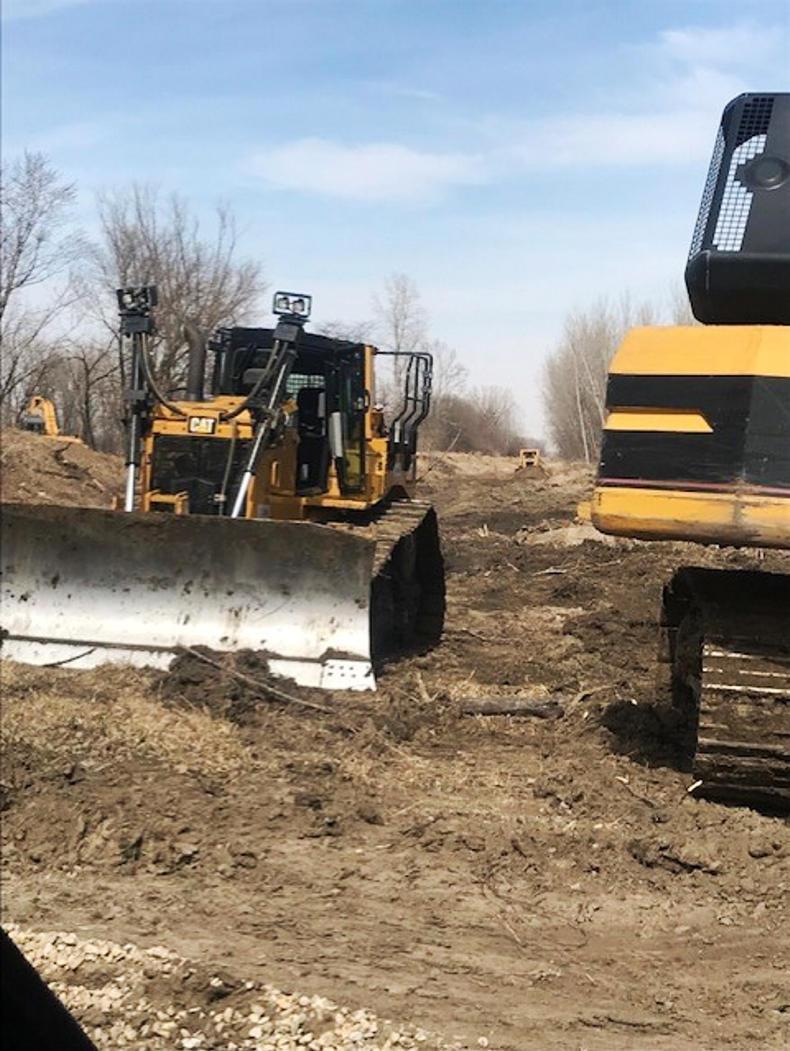
Burst levees on the Rosenbohm Farm left land flooded in spring and now metres of soil have to be moved about to remake these levees.
We did manage to plant all our acres here but we had to replant 200 acres of flooded corn with soya beans after the local river came in over our levee systems. Harvest went pretty well and normal, fall work went well.
This winter we had basically no snow and only three weeks of icy weather that stayed on the ground too long for me. Yields were average for maize but our soya beans were about 20% better than planned for, which is always a nice surprise for us in agriculture.
The year ahead
Now on to 2020 – another strange start. Weather is doing OK so far but the markets are a mess. None of us ever sell enough in the high times it appears. Our maize goes to the Ingredion Starch company so it is contracted production.
Here in the US, bioethanol is a valuable market for surplus corn
We usually like to spread the marketing out over the spring and summer months to capture the carry in the markets and the chance of better summer markets. But with the COVID-19 issue it appears that all bets are off on things being normal again for a long time.
Here in the US, bioethanol is a valuable market for surplus corn but with the oil markets depressed, the ethanol industry is doing very poorly. Indeed, some plants are shutting down and others are reducing output. Both are putting additional pressure on maize prices.
No one can seem to find a stable market for finished cattle
It is now almost impossible for cattle feeders to buy maize DDGs, so they have to make alternative arrangements for their feed needs. And this is unlikely to change for a while.
Cattle prices are absolutely crazy. No one can seem to find a stable market for finished cattle.
We would think that China needs our production but not much has showed up on price so that market is not normal either
Packers are making huge margins as demand is up for boxed beef due to the lockdown. Cash bids are down for the feedlots and the futures market is disconnected from the cash markets by about $20 a hundredweight. Hogs are in a world of their own.
We would think that China needs our production but not much has showed up on price so that market is not normal either.
Soya beans have a little better chance but the markets are telling us they do not want our production and South America is bringing more unneeded product to the markets soon. Not a good combination, I am afraid.
On to better things
Interest rates are slowly creeping down. I was offered a machinery loan for a new side-dress rig (applies 32% liquid UAN) at a rate of 3.85% for five years. Our farmland lender is showing a 0.5% to 0.75% rate reduction if we want to re-do our large land loans, so we will be looking at that idea this summer.
While it is anyone’s guess at this point, any reduction in interest rate is a lot of savings for our farm
I am hoping for even lower interest offers this summer as I envisage a 3.5% rate for 15-20 years is a possibility. While it is anyone’s guess at this point, any reduction in interest rate is a lot of savings for our farm.
Fuel
This is a wild one. When prices dropped in 2016, I put in an additional 10,000 gallon (38,000 litre) storage tank on the farm. This allowed us to receive tanker loads (27,500 litre) at a good saving. This additional capacity meant we can hold about 50% of our farm’s fuel needs for the year in our different tanks.
With the current drop in oil prices, road fuel is showing a wide spread between supplier and retailer on the road
We purchased a load of farm diesel for $1.30/gallon (US) or $0.34/l two weeks ago. We will be buying another next month, hopefully lower. We plan on contracting for our 2021 fuel needs if we can get these lower prices. Time will tell on this plan.
With the current drop in oil prices, road fuel is showing a wide spread between supplier and retailer on the road. We usually just purchase this fuel as needed for our trucks at retail locations we like. But the last few weeks we are seeing a $0.60/gallon ($0.16/l) spread between our tanker pricing and the retailer pricing.
We use about twice as much truck fuel as farm fuel
So I ordered a 16,800-gallon (63,500l) tank and we will put that to use for the trucks here on the farm.
We use about twice as much truck fuel as farm fuel so the strategy represents even more savings for the farm business. We hope to pay for the tank system within the first year. Our road fuels carry $0.17/gallon state taxes and $0.244 federal taxes. With road fuel retailing around $2.25/gallon ($0.594/l), I am hoping to purchase the tanker of road fuel down around $1.60/gallon($0.42/l)
Nitrogen management
A discussion that Andy Doyle and I have had in the past is the split application of nitrogen. Three years ago we began looking at utilising 32% N liquid in the growing crop, injected between the rows. I am still not sure where we are going on this project.
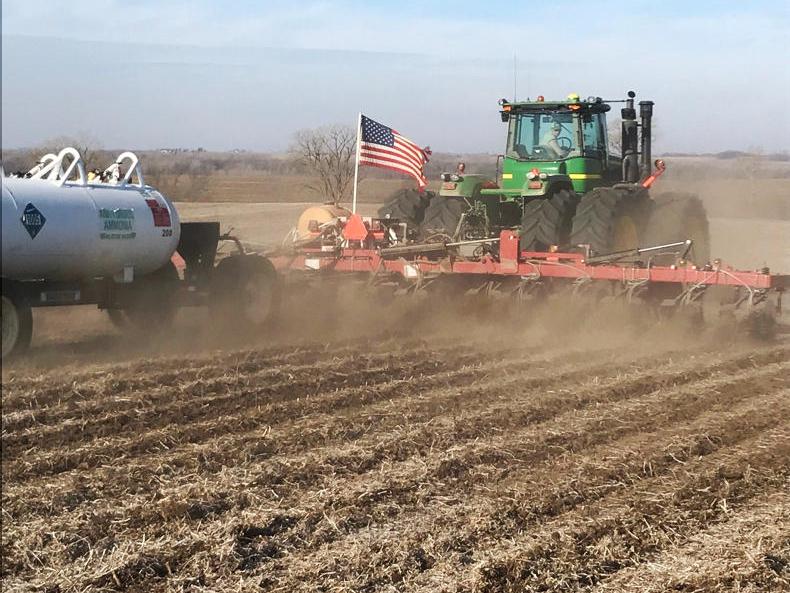
Kevin applying gaseous anhydrous ammonia near planting. Anhydrous ammonia is injected into soil and is a popular source of nitrogen fertiliser in America.
The first year was the drought, so no useful results that year. Last year was extremely wet, so the results were all over the board.
We had looked at three treatments in a maize crop: our normal rate of anhydrous ammonia, a reduced rate of anhydrous plus the balance as 32% UAN and a complete treatment using UAN.
I do like the idea of splitting up the type of nitrogen and the timing of nitrogen for the cost savings and environmental concerns
Last year’s results were all within four bushels, so my idea of split N has produced no concrete data yet. Maybe this year will be better.
But I do like the idea of splitting up the type of nitrogen and the timing of nitrogen for the cost savings and environmental concerns.
If we can achieve the desired yield levels with less applied N, that’s a win-win.
Machinery updates
We recently purchased a specialised additional maize planter. It is a centre-fill Kinze 24-row 30in electric drive planter with an 18m width. We hope to cover 300 acres a day efficiently with this new addition. This second planter allows us to plant maize and soya beans at the same time, if needed.
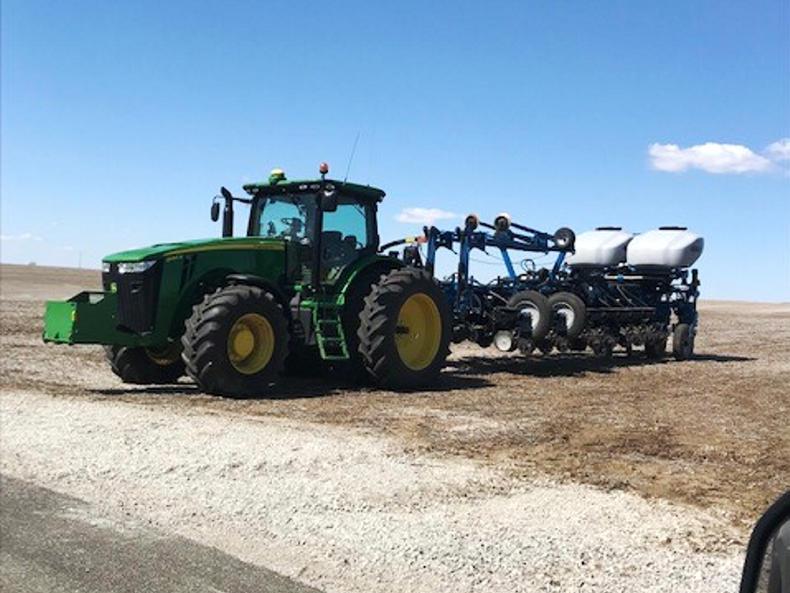
Kevin recently purchased a second planter which now allows him to plant maize and soya beans at the same time.
The boys and I were concerned that we were having to plant too many acres in a window that seems to be getting tighter. The objective now is to plant when conditions are perfect rather than being in a rush to cover too many acres too quickly.
The wider planter meant we needed to update the side-dress applicator to match the rows.
I am tracking all these additional expenses associated with the split application of N
We found a new applicator, which was already three years old, at a John Deere dealer and bought it at dealer cost. So now we match the 18m planter for efficient application.
I am tracking all these additional expenses associated with the split application of N and, so far, I am not seeing a very good rate of return for the infrastructure. Time will tell, I guess.
Land
We are seeing a slight increase in the amount of land for sale. It appears that there are a few farmers in a financial tight spot who are selling off some acres to make their creditors feel more comfortable.
Land prices have not come down much
A few others are “retiring” while they have some money left over. I fear this is not over and we will see a continued pattern for a few years.
Land prices have not come down much yet; the poor ground will drop more than the good productive land. Price ranges on good ground are $7,000-$9,000 per acre, but there is not much good ground trading.
Inputs
Fuel is down about 40% since 1 January. Fertiliser has dropped slightly recently but we had price drops in November and December of about 20%.
Seed is offering no real price reductions at all. The seed companies seem to have too much control.
Labour – it is difficult to find willing workers. We got one new young man but we will lose one in June. Farm workers start at $13-$15 per hour and more as they prove their worth.
The COVID-19 fiasco
What a mess! Basically we are in a lockdown like everyone else. But agriculture is exempt so we are seeing our operation as business as usual. In fact, I think we are busier than normal.
So we will survive but what the world will look like after this is anyone’s guess
We have no idea where the world is headed. I guess all of us are tough, rugged individuals or else we would not be in agriculture.
So we will survive but what the world will look like after this is anyone’s guess.
Despite the chaos, it is good to be in the midwest for these times. Family is close, food is plentiful, work is still here and needs doing.
Spring planting will be like therapy to keep our minds off of the bad things going on.
Levee system repairs
As our Irish interns and Andy Doyle noticed when they were here, we utilise a system of levees on our rivers and ditches feeding the rivers. On 15-20 May last year we experienced extreme rains and the levee system could not hold the water back.
I am president of a levee system that protects some of our bottom farms. We experienced 10 breaks in the lower end of the system. Not too bad considering all the water and 11 miles of levees.
With all governmental programmes, there is always an extreme amount of bureaucracy and lack of quick response
Our government has a cost share of 75%-25% programme with declared emergencies under the Federal Emergency management administration (FEMA) and SEMA state emergency management administration.
We qualified for their programmes but, as with all governmental programmes, there is always an extreme amount of bureaucracy and lack of quick response. The levee district applied for their programme and followed through with the paperwork and repair design.
Sad to say, this but 10 months later we still had open levees and not much hope of fixing the problems before spring rains. They had 80 people and topics that had to sign off on our plan. We gave up and decided to go it alone with our limited funding.
Sometimes it works best if us farmers just do what we know is right and get after the issues ourselves
We brought in three dozers and two diggers. In less than 10 working days we were able to close the holes and secure the levees.
Sometimes, government help is not much help at all. We felt it would be late summer before the levees were repaired under their plan. Sometimes it works best if us farmers just do what we know is right and get after the issues ourselves.
The future
As for guessing the future, I am as unsure as ever. Our USDA came out recently with an estimate of 97m acres of corn, an 8% increase or an additional 7.3m acres on last year.
We do not need any more corn at this time.
Soya beans are not much better. They estimated 83.5m acres of production – a 10% increase. It appears us farmers are too good at producing grains around the world.
But like our farming friends around the world, we will survive
I do not look forward to prices for the next two years due to over production of corn and beans.
It appears farming is going to be tough for a few more years here in the US.
But like our farming friends around the world, we will survive and do what we all do best in supplying food and fibre to the world.
ITLUS-ROSENBOHM Internship
Given the many uncertainties posed for travel ability in this current year, Andy Doyle and myself decided to pause our internship programme.
Hopefully we can be back on the air in 2021. Here at Rosenbohm Farms we miss the opportunity for Irish input and knowledge in our operation, but such is life right now.
Greetings from Missouri. We wish our Irish friends good health and success in dealing with COVID-19 and economic concerns created by it.
Well, another year and we arrive at another set of new adventures. The last two years have given us extremes in weather and farming issues. 2018 brought us record drought and extremely poor yields; 2019 was almost the opposite in that the year was wet for most of the spring, making planting of corn and soya beans almost impossible to complete on time – in fact 10m acres never got planted here in the US.

Burst levees on the Rosenbohm Farm left land flooded in spring and now metres of soil have to be moved about to remake these levees.
We did manage to plant all our acres here but we had to replant 200 acres of flooded corn with soya beans after the local river came in over our levee systems. Harvest went pretty well and normal, fall work went well.
This winter we had basically no snow and only three weeks of icy weather that stayed on the ground too long for me. Yields were average for maize but our soya beans were about 20% better than planned for, which is always a nice surprise for us in agriculture.
The year ahead
Now on to 2020 – another strange start. Weather is doing OK so far but the markets are a mess. None of us ever sell enough in the high times it appears. Our maize goes to the Ingredion Starch company so it is contracted production.
Here in the US, bioethanol is a valuable market for surplus corn
We usually like to spread the marketing out over the spring and summer months to capture the carry in the markets and the chance of better summer markets. But with the COVID-19 issue it appears that all bets are off on things being normal again for a long time.
Here in the US, bioethanol is a valuable market for surplus corn but with the oil markets depressed, the ethanol industry is doing very poorly. Indeed, some plants are shutting down and others are reducing output. Both are putting additional pressure on maize prices.
No one can seem to find a stable market for finished cattle
It is now almost impossible for cattle feeders to buy maize DDGs, so they have to make alternative arrangements for their feed needs. And this is unlikely to change for a while.
Cattle prices are absolutely crazy. No one can seem to find a stable market for finished cattle.
We would think that China needs our production but not much has showed up on price so that market is not normal either
Packers are making huge margins as demand is up for boxed beef due to the lockdown. Cash bids are down for the feedlots and the futures market is disconnected from the cash markets by about $20 a hundredweight. Hogs are in a world of their own.
We would think that China needs our production but not much has showed up on price so that market is not normal either.
Soya beans have a little better chance but the markets are telling us they do not want our production and South America is bringing more unneeded product to the markets soon. Not a good combination, I am afraid.
On to better things
Interest rates are slowly creeping down. I was offered a machinery loan for a new side-dress rig (applies 32% liquid UAN) at a rate of 3.85% for five years. Our farmland lender is showing a 0.5% to 0.75% rate reduction if we want to re-do our large land loans, so we will be looking at that idea this summer.
While it is anyone’s guess at this point, any reduction in interest rate is a lot of savings for our farm
I am hoping for even lower interest offers this summer as I envisage a 3.5% rate for 15-20 years is a possibility. While it is anyone’s guess at this point, any reduction in interest rate is a lot of savings for our farm.
Fuel
This is a wild one. When prices dropped in 2016, I put in an additional 10,000 gallon (38,000 litre) storage tank on the farm. This allowed us to receive tanker loads (27,500 litre) at a good saving. This additional capacity meant we can hold about 50% of our farm’s fuel needs for the year in our different tanks.
With the current drop in oil prices, road fuel is showing a wide spread between supplier and retailer on the road
We purchased a load of farm diesel for $1.30/gallon (US) or $0.34/l two weeks ago. We will be buying another next month, hopefully lower. We plan on contracting for our 2021 fuel needs if we can get these lower prices. Time will tell on this plan.
With the current drop in oil prices, road fuel is showing a wide spread between supplier and retailer on the road. We usually just purchase this fuel as needed for our trucks at retail locations we like. But the last few weeks we are seeing a $0.60/gallon ($0.16/l) spread between our tanker pricing and the retailer pricing.
We use about twice as much truck fuel as farm fuel
So I ordered a 16,800-gallon (63,500l) tank and we will put that to use for the trucks here on the farm.
We use about twice as much truck fuel as farm fuel so the strategy represents even more savings for the farm business. We hope to pay for the tank system within the first year. Our road fuels carry $0.17/gallon state taxes and $0.244 federal taxes. With road fuel retailing around $2.25/gallon ($0.594/l), I am hoping to purchase the tanker of road fuel down around $1.60/gallon($0.42/l)
Nitrogen management
A discussion that Andy Doyle and I have had in the past is the split application of nitrogen. Three years ago we began looking at utilising 32% N liquid in the growing crop, injected between the rows. I am still not sure where we are going on this project.

Kevin applying gaseous anhydrous ammonia near planting. Anhydrous ammonia is injected into soil and is a popular source of nitrogen fertiliser in America.
The first year was the drought, so no useful results that year. Last year was extremely wet, so the results were all over the board.
We had looked at three treatments in a maize crop: our normal rate of anhydrous ammonia, a reduced rate of anhydrous plus the balance as 32% UAN and a complete treatment using UAN.
I do like the idea of splitting up the type of nitrogen and the timing of nitrogen for the cost savings and environmental concerns
Last year’s results were all within four bushels, so my idea of split N has produced no concrete data yet. Maybe this year will be better.
But I do like the idea of splitting up the type of nitrogen and the timing of nitrogen for the cost savings and environmental concerns.
If we can achieve the desired yield levels with less applied N, that’s a win-win.
Machinery updates
We recently purchased a specialised additional maize planter. It is a centre-fill Kinze 24-row 30in electric drive planter with an 18m width. We hope to cover 300 acres a day efficiently with this new addition. This second planter allows us to plant maize and soya beans at the same time, if needed.

Kevin recently purchased a second planter which now allows him to plant maize and soya beans at the same time.
The boys and I were concerned that we were having to plant too many acres in a window that seems to be getting tighter. The objective now is to plant when conditions are perfect rather than being in a rush to cover too many acres too quickly.
The wider planter meant we needed to update the side-dress applicator to match the rows.
I am tracking all these additional expenses associated with the split application of N
We found a new applicator, which was already three years old, at a John Deere dealer and bought it at dealer cost. So now we match the 18m planter for efficient application.
I am tracking all these additional expenses associated with the split application of N and, so far, I am not seeing a very good rate of return for the infrastructure. Time will tell, I guess.
Land
We are seeing a slight increase in the amount of land for sale. It appears that there are a few farmers in a financial tight spot who are selling off some acres to make their creditors feel more comfortable.
Land prices have not come down much
A few others are “retiring” while they have some money left over. I fear this is not over and we will see a continued pattern for a few years.
Land prices have not come down much yet; the poor ground will drop more than the good productive land. Price ranges on good ground are $7,000-$9,000 per acre, but there is not much good ground trading.
Inputs
Fuel is down about 40% since 1 January. Fertiliser has dropped slightly recently but we had price drops in November and December of about 20%.
Seed is offering no real price reductions at all. The seed companies seem to have too much control.
Labour – it is difficult to find willing workers. We got one new young man but we will lose one in June. Farm workers start at $13-$15 per hour and more as they prove their worth.
The COVID-19 fiasco
What a mess! Basically we are in a lockdown like everyone else. But agriculture is exempt so we are seeing our operation as business as usual. In fact, I think we are busier than normal.
So we will survive but what the world will look like after this is anyone’s guess
We have no idea where the world is headed. I guess all of us are tough, rugged individuals or else we would not be in agriculture.
So we will survive but what the world will look like after this is anyone’s guess.
Despite the chaos, it is good to be in the midwest for these times. Family is close, food is plentiful, work is still here and needs doing.
Spring planting will be like therapy to keep our minds off of the bad things going on.
Levee system repairs
As our Irish interns and Andy Doyle noticed when they were here, we utilise a system of levees on our rivers and ditches feeding the rivers. On 15-20 May last year we experienced extreme rains and the levee system could not hold the water back.
I am president of a levee system that protects some of our bottom farms. We experienced 10 breaks in the lower end of the system. Not too bad considering all the water and 11 miles of levees.
With all governmental programmes, there is always an extreme amount of bureaucracy and lack of quick response
Our government has a cost share of 75%-25% programme with declared emergencies under the Federal Emergency management administration (FEMA) and SEMA state emergency management administration.
We qualified for their programmes but, as with all governmental programmes, there is always an extreme amount of bureaucracy and lack of quick response. The levee district applied for their programme and followed through with the paperwork and repair design.
Sad to say, this but 10 months later we still had open levees and not much hope of fixing the problems before spring rains. They had 80 people and topics that had to sign off on our plan. We gave up and decided to go it alone with our limited funding.
Sometimes it works best if us farmers just do what we know is right and get after the issues ourselves
We brought in three dozers and two diggers. In less than 10 working days we were able to close the holes and secure the levees.
Sometimes, government help is not much help at all. We felt it would be late summer before the levees were repaired under their plan. Sometimes it works best if us farmers just do what we know is right and get after the issues ourselves.
The future
As for guessing the future, I am as unsure as ever. Our USDA came out recently with an estimate of 97m acres of corn, an 8% increase or an additional 7.3m acres on last year.
We do not need any more corn at this time.
Soya beans are not much better. They estimated 83.5m acres of production – a 10% increase. It appears us farmers are too good at producing grains around the world.
But like our farming friends around the world, we will survive
I do not look forward to prices for the next two years due to over production of corn and beans.
It appears farming is going to be tough for a few more years here in the US.
But like our farming friends around the world, we will survive and do what we all do best in supplying food and fibre to the world.
ITLUS-ROSENBOHM Internship
Given the many uncertainties posed for travel ability in this current year, Andy Doyle and myself decided to pause our internship programme.
Hopefully we can be back on the air in 2021. Here at Rosenbohm Farms we miss the opportunity for Irish input and knowledge in our operation, but such is life right now.







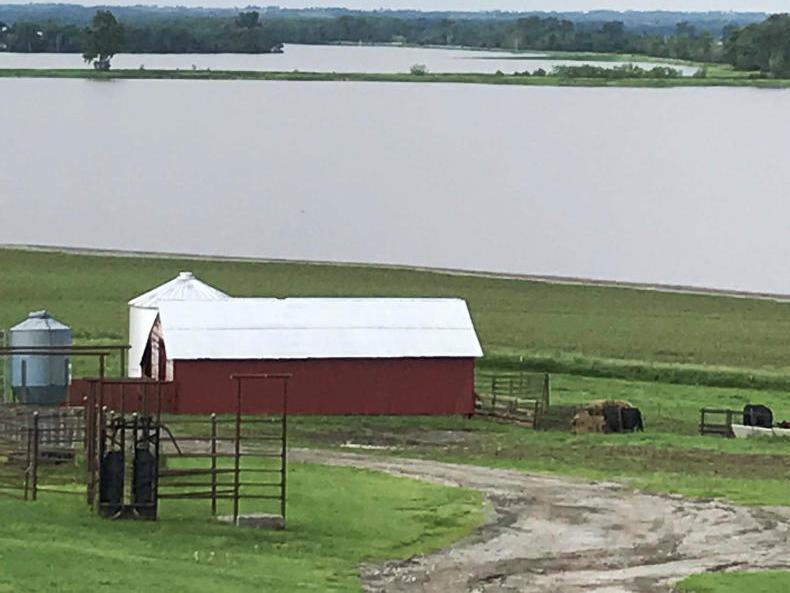
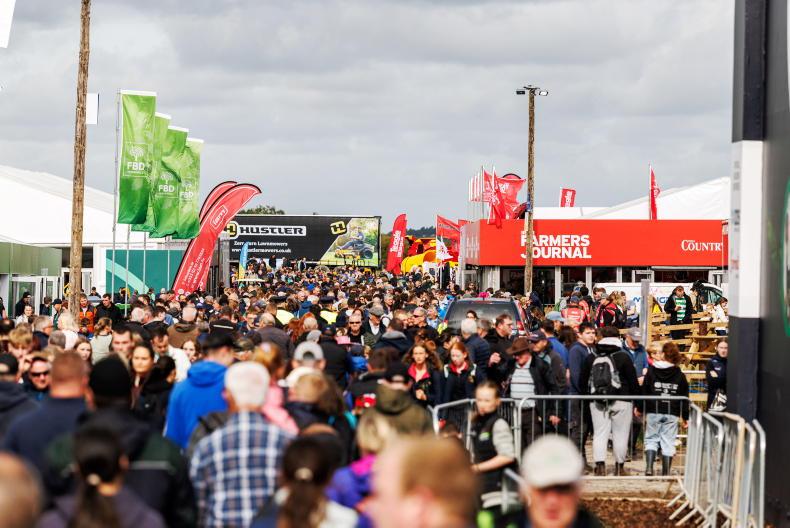
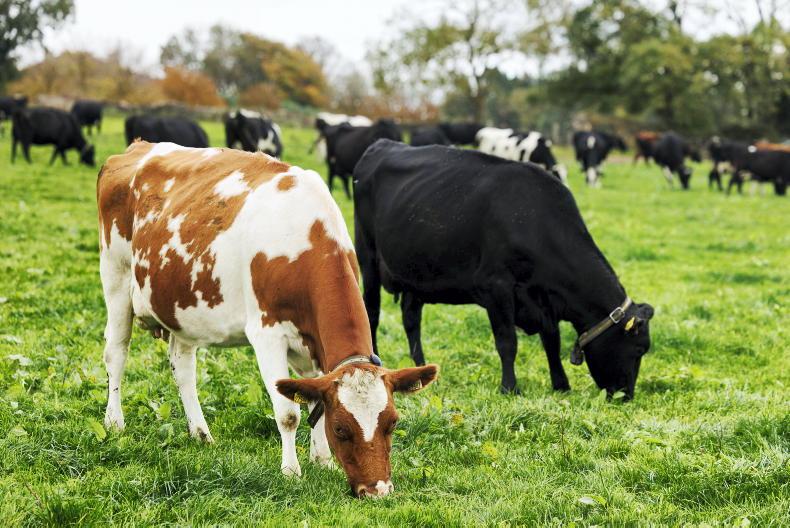

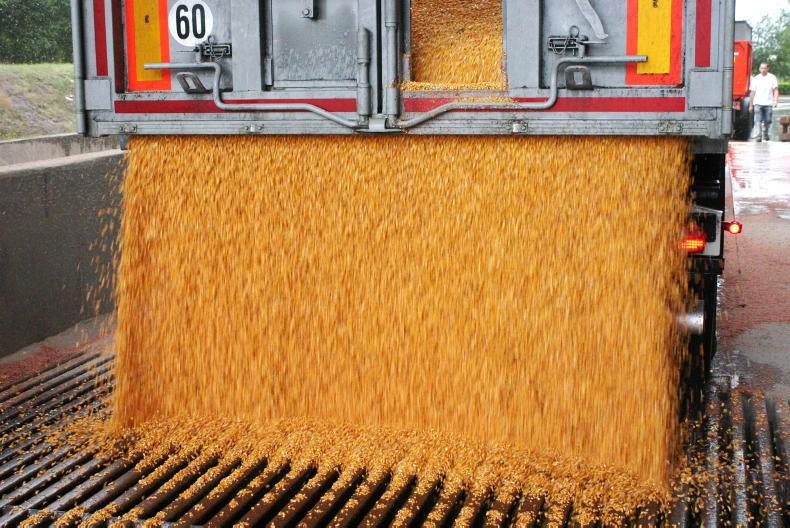
SHARING OPTIONS